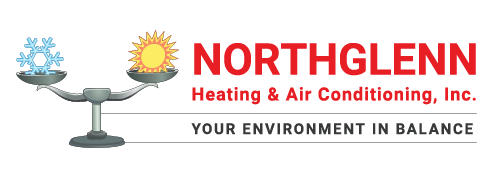
You shouldn’t need to compromise on comfort or drain your wallet to keep your residence at a pleasant setting during muggy weather.
But what is the best temperature, exactly? We go over advice from energy specialists so you can select the best temp for your loved ones.
Here’s what we advise for the most energy-efficient setting for air conditioning in Northglenn.
Recommended Thermostat Settings for Summer
Most households find using the thermostat at 72-73 degrees is ideal. However, if there’s a major difference between your interior and outside temperatures, your AC costs will be greater.
This is our advice based on the U.S. Department of Energy (DOE) and ENERGY STAR®.
While at home: 78 degrees. While that sounds warm, there are methods you can keep your residence refreshing without having the air conditioning running all the time.
Keeping windows and window treatments closed during the day keeps cold air where it should be—inside. Some window coverings, such as honeycomb shades or plantation shutters, are created to give added insulation and enhanced energy savings.
If you have ceiling fans in your house, the DOE says you can move thermostat settings about 4 degrees hotter without compromising comfort. That’s since they freshen with a windchill effect. Because they cool people, not areas, shut them off when you leave a room.
If 78 degrees still appears too uncomfortable on the surface, try conducting a test for about a week. Start by upping your thermostat to 78 degrees while you’re at your residence. Then, steadily lower it while following the suggestions above. You may be shocked at how refreshed you feel at a warmer temperature setting.
While away: 88 degrees. There’s no need to keep the AC going all day while your house is vacant. Turning the temp 7–10 degrees higher can save you anywhere from 5–15% on your air conditioning costs, according to the DOE.
When you get home, don’t be tempted to switch your thermostat under 78 to cool your residence faster. This isn’t useful and usually leads to a higher cooling bill.
A programmable thermostat is a good method to keep your temperature in check, but you need to set programs. If you don’t set programs, you might forget to change the set temperature when you take off.
If you want a convenient fix, consider getting a smart thermostat. This thermostat works with with your phone, so it knows when you’re at your house and when you’re out. Then it instinctively changes temperature settings for the biggest savings. How much exactly? An estimated $180 yearly on heating and cooling, according to ENERGY STAR.
Another advantage of using a smart thermostat? You can use your phone to watch and change temperature settings from just about anywhere.
While sleeping: Around 70 degrees. While ENERGY STAR advises 82 degrees, that might be unbearable for most families. Most people sleep better when their sleeping space is cold, so that’s why the National Sleep Foundation suggests 60–67 degrees. But that may be too chilly, based on your pajama and blanket preference.
We advise following a similar test over a week, putting your temperature higher and progressively turning it down to locate the best temperature for your house. On mild nights, you might learn keeping windows open at night and using a ceiling fan is a better solution than using the air conditioning.
More Approaches to Use Less Energy During Hot Weather
There are added methods you can save money on cooling bills throughout warm weather.
- Install an energy-efficient AC system. Central air conditioners only are effective for about 12–15 years and become less efficient as they age. An updated air conditioner can keep your home comfier while keeping electrical expenses small.
- Schedule regular air conditioner tune-ups. Regular air conditioner maintenance keeps your equipment working properly and could help it operate more efficiently. It might also help lengthen its life span, since it helps pros to pinpoint small issues before they cause a major meltdown.
- Put in new air filters regularly. Follow manufacturer instructions for changing your air filter. A clogged filter can lead to your system short cycling, or switch on and off too much, and raise your electricity.
- Measure attic insulation levels. Almost 90% of residences in the United States don’t have enough insulation, according to the Insulation Institute. The majority of southern climates should have 13–14” of attic insulation, while northern climates need 16–18”.
- Have your ductwork checked. Ductwork that has come apart over time can let conditioned air into your attic, walls or crawl space. This can lead to big comfort issues in your house, like hot and cold spots.
- Seal cracks, doors and windows. Keep hot air in its place by sealing holes. You can also caulk or weather strip doors to trap more cold air inside.
Conserve More Energy During Warm Weather with Northglenn Heating & Air Conditioning
If you want to use less energy this summer, our Northglenn Heating & Air Conditioning pros can assist you. Get in touch with us at 303-452-4146 or contact us online for additional information about our energy-saving cooling products.
